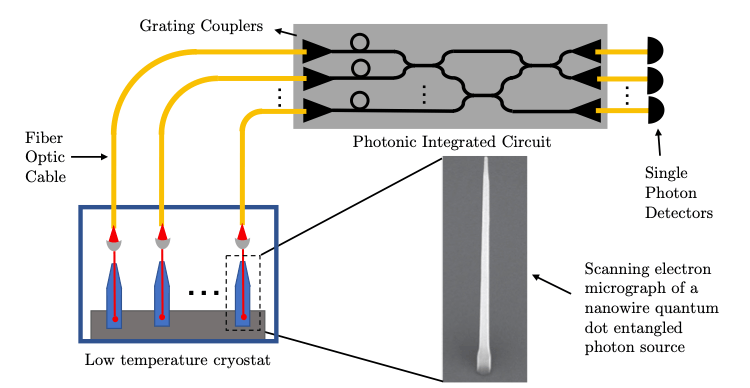As the demand for digital services grows, so does the need for data centres and transmission networks. Unfortunately, these data systems consume vast amounts of energy, resulting in nearly 1% of all energy-related greenhouse gas emissions. This project aims to invent novel quantum devices for highly energy-efficient computing that may help reduce the global digital carbon footprint. Tellurium (Te)-based devices will be gated through antiferroelectric (AFE) stacks to form a multi-valued-logic quantum device. A tapered Te region will be used as the active material of the developed transistors. This proposed architecture can rely on quantum tunnelling effects to minimize energy consumption per transition while circumventing the limitations of the classical field-effect transistors. The AFE layer can transform binary logic switches into ternary logic devices, allowing fewer transistors to perform the same function and reduce overall power consumption. The researchers will first develop, calibrate, and validate an AFE model and use the model to investigate the characteristics of AFE capacitors. The electronic states and materials parameters of Te will also be explored. Next, a new simulation tool will be developed to study the physics related to the proposed devices and the optimal device structure will be proposed for a prototype. The modelling results will be further validated and calibrated against experiments, allowing the device to be updated iteratively for further optimization. The quantum simulation tool and prototype ternary devices will not only help build ultra-low-power electronics for sustainable computing but will also elevate our knowledge in material science, quantum physics, and electronics.

Figure 1. (a) Tellurium crystal structure with unique helical chains for the active channel material of the device. (b) A double hysteresis loop in the polarization vs. electric field characteristic of antiferroelectric thin film for multi-valued-logic operation.
Related Content

Magnetoelectric Coupling in New Composite Multiferroic Nanostructures as High-Density Quantum Multistate Memory Elements
Summary Magnetoelectric multiferroics are materials that exhibit correlated ferroelectric and ferromagnetic properties (i.e., a magnetoelectric effect). The resulting ability of these materials to simultaneously store data in electric polarization and magnetic moment could increase data storage density and data processing speed while reducing energy consumption. This project aims to design and fabricate new composite multiferroic […]
February 1, 2023

Novel Infrared Camera Based on Quantum Sensors for Biomedical Applications
Summary In this project we develop a novel infrared camera with low noise and high detection efficiency for biomedical applications of optical coherence tomography (OCT) using quantum materials. OCT is a technique used to image the back of the eye and allow for the diagnosis of detrimental eye conditions, for e.g., macular degeneration, diabetic retinopathy […]
March 13, 2019

Photonic Quantum Processor
Photonic quantum processors based on integrated quantum photonic circuits require entangled photon pairs to perform quantum computations. However, current state-of-the-art technologies utilize probabilistic entangled photon sources with limited pair-extraction efficiencies, negatively affecting the computation speed. This project aims to boost the speed of on-chip quantum operations by using bright, on-demand entangled photon sources with an […]
April 24, 2023
Quantum Sensing Applications using Quantum Communication Technology
Summary The Quantum Encryption and Science Satellite provides a platform to develop and deploy quantum sensing and metrology via photonic channels. This project will build upon ‘free-space’ quantum communication technology and explore new approaches and methods to advance two primary applications: quantum-enhanced telescopes, and spectroscopic sensing for methane detection in the atmosphere. For the […]
December 8, 2018

